Electric performances, thought-provoking choreography, buzzy bodies of work—the artists on our annual list of dancers, choreographers, directors, and companies poised for a breakout share an uncanny knack for arresting attention. They’ve been turning heads while turning what’s expected—in a performance, from a career trajectory—on its head. We’re betting we’ll be seeing a lot more of them this year, and for many years to come.
Clarissa Rivera Dyas
Freelance dancer and choreographer
Clarissa Rivera Dyas thrives most in collaboration with other artists, and layers different art forms with sophistication. She created Something Remains, her 2022 evening-length choreographic debut, with visual artist and composer Jakob Pek. In it, Dyas and her three dancers pushed the boundaries of physicality as they danced with long rolls of paper and paint, serving as both brushes and canvas. Her dynamic movement, which defied predictability as it showcased both strength and vulnerability, served as the perfect counterpoint to Pek’s experimental score.
Dyas, a sought-after performer for artists like Robert Moses, prioritizes disrupting norms, challenging expectations, and embracing the raw, vulnerable, and even sloppy in her work. “How can we involve the idea of failure?” she asks. “As a Black queer artist, there is little room for failure. How can we allow for failure?”
In 2021, after recurring experiences of being tokenized in the largely white-led Bay Area dance scene, she co-founded the nonhierarchical artist collective RUPTURE alongside fellow queer Black artists jose e. abad, Stephanie Hewett, Gabriele Christian, and Styles Alexander. “It’s about being in process with collective rest, play, and somatic experimentation as resistance,” she says, “challenging what it means to be in dance and performance.” A RUPTURE event might include dance, live sound design, spoken word, visual art, multimedia elements, community engagement, improvisation, and play. In June, the cohort will present a new work at San Francisco’s Fort Mason Center for Arts & Culture.
—Rachel Caldwell
Danielle Swatzie
Freelance dancer, choreographer, and filmmaker
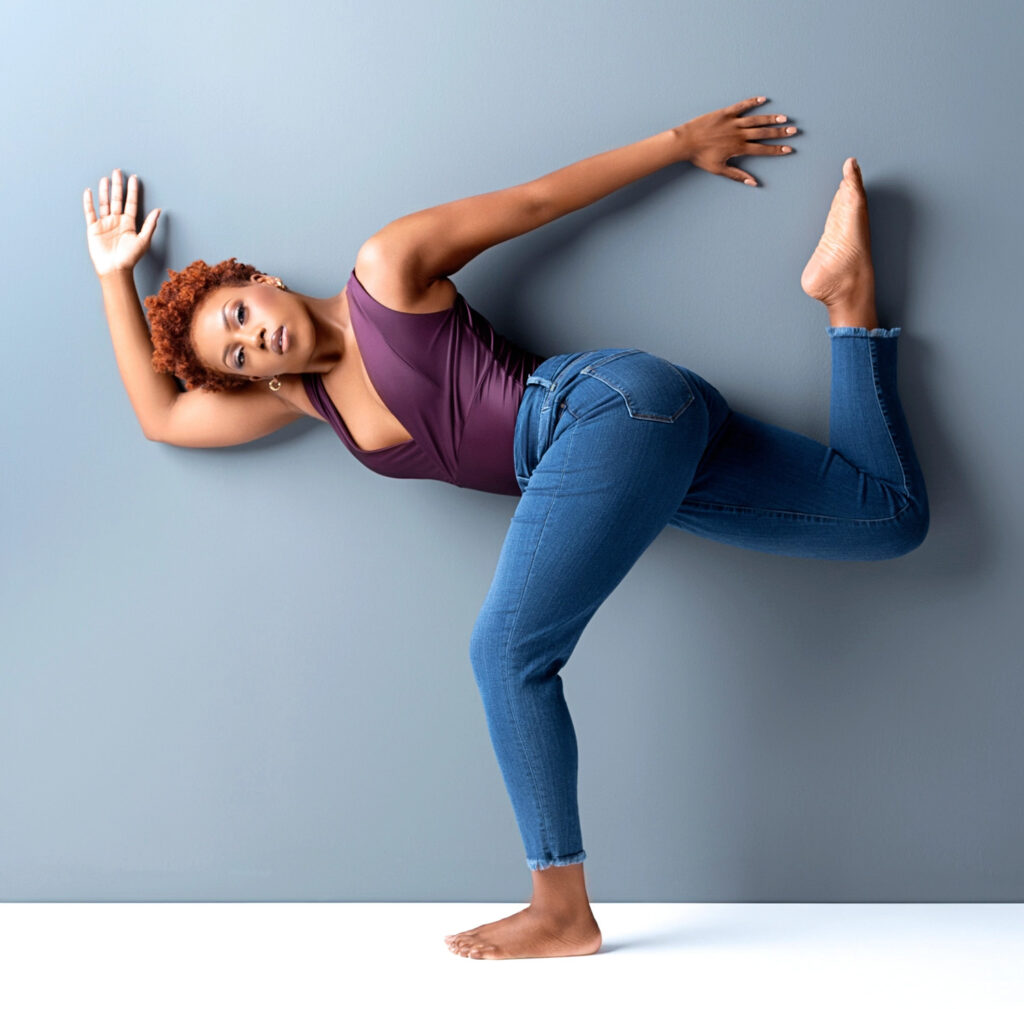
If any contemporary dance artist captures the spirit of Atlanta’s up-and-coming generation, it’s Danielle Swatzie. Take her solo The Fleeting Serenade. In the section set to Ella Fitzgerald’s rendition of the jazz standard “Angel Eyes,” Swatzie whirls across the stage, her legs slicing arcs, arms gesturing in staccato bursts as she embodies the emotional turmoil churning beneath the song’s smooth surface.
A graduate of Philadelphia’s University of the Arts, Swatzie is equally compelling in front of or behind a camera. She creates an aura of honesty, thoughtfulness, and fearless compassion combined with a drive to unpack inner emotional landscapes. Her dance films, which illuminate a vision of a more equitable world, have been garnering increasing attention. META, a solo reflecting on family, generational trauma, and feminine empowerment, received the 2021 BronzeLens Film Festival Award for Best Music/Dance Video. Her growing roots through concrete was selected for American Dance Festival’s 2023 Movies By Movers festival. The film features seven young women artists, Black and white, who join together in precarious group counterbalances to confront individual experiences with racism and find wholeness as a community—as Swatzie says, through “radical connection and radical love to manifest radical change.”
—Cynthia Bond Perry
Grace Rookstool
Soloist, Pittsburgh Ballet Theatre
Last season, Pittsburgh Ballet Theatre’s statuesque Grace Rookstool made a pair of major debuts. The then–corps-member embodied emotional resilience as Mina in Michael Pink’s Dracula and showed off her commanding stage presence and technical prowess as Aurora in The Sleeping Beauty. She dances with an assuredness that artistic director Adam McKinney says got her promoted to the rank of soloist for this season. “She is a consummate professional, a classicist, and has a natural sensibility to embody music,” he says of the 23-year-old.
Born and raised on Whidbey Island, Washington, Rookstool trained at Pacific Northwest Ballet School and in its Professional Division Program. While there, she was selected for an exchange program with Dresden Semperoper Ballett and danced in its production of La Bayadère. She joined PBT’s corps de ballet in 2019.
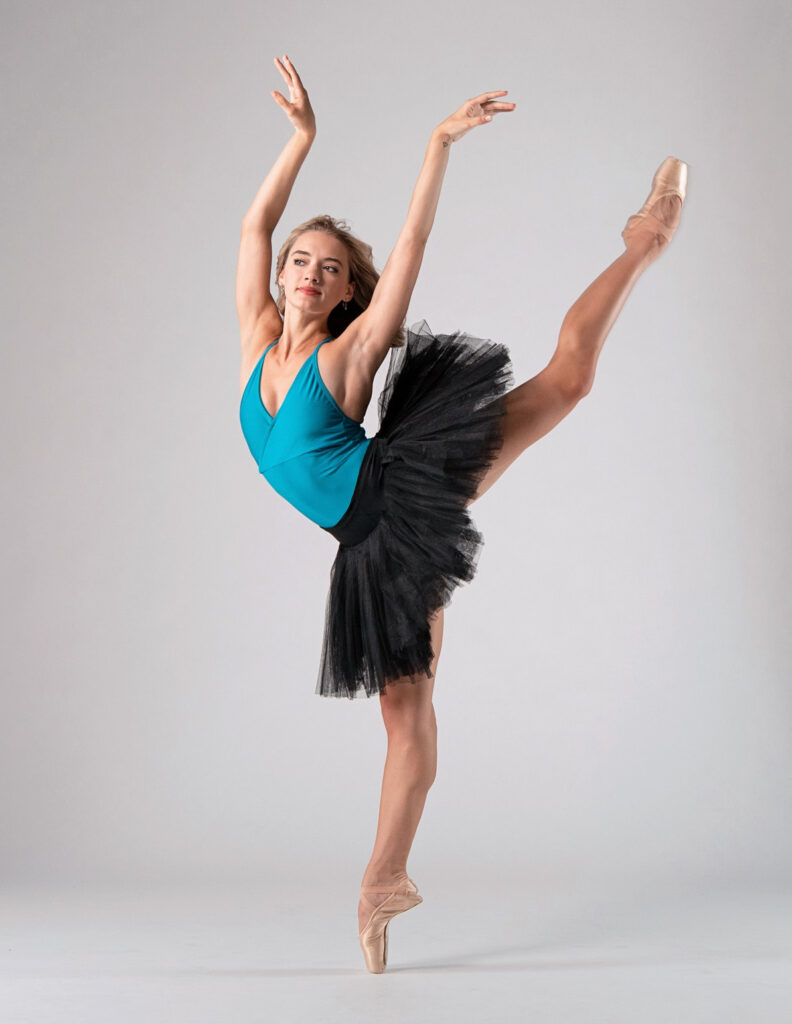
A truly versatile dancer, Rookstool says she most enjoys high-flying jumps. Expect her career to soar in 2024.
—Steve Sucato
Erina Ueda
Dancer, Giordano Dance Chicago
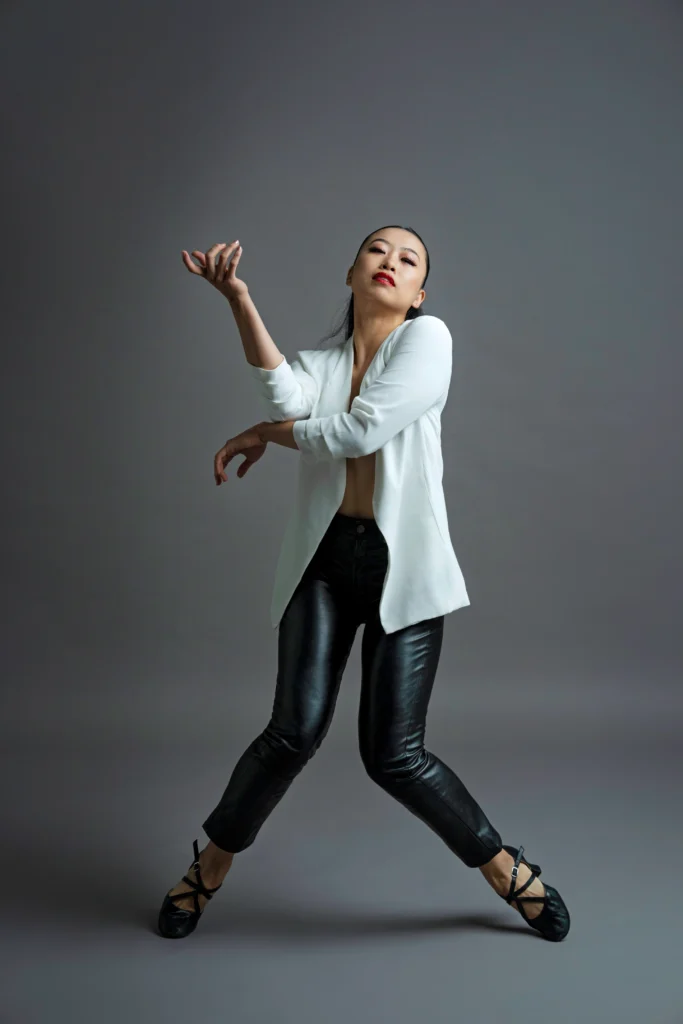
Erina Ueda’s breakout moment with Giordano Dance Chicago came last April in Kia Smith’s Luminescence. With a cast of 22 dancers filling the cavernous Harris Theater, the piece starts and ends with Ueda completely alone, in a solo showcasing her unbridled facility and unflappable joy. Giordano’s dancers are known for their silky jazz technique balanced with razor-sharp precision. Ueda has that and more, bringing honesty and authenticity to the company’s rep.
Ueda earned a BFA in dance with a minor in psychology from the University of Arizona, not too far from her hometown of Chandler, Arizona. Born in Japan, she was the first Asian woman to join the 60-year-old Giordano company. She’s upped its digital game, too, as the company’s social media manager and video content producer since her arrival in 2022.
—Lauren Warnecke
Donovan Reed
Dancer, A.I.M by Kyle Abraham
Nature metaphors spring to mind as you watch A.I.M by Kyle Abraham’s Donovan Reed. They seem driven by wind, buoyed by water, licked by fire. They might stop a liquid phrase cold with a thorny angle—not breaking the spider’s thread of movement, but rather snapping it taut. They can make the unlikeliest shapes look organic. (Though these qualities never feel less than authentic to Reed, they are very Abraham-esque: Reed, who’s danced with A.I.M since 2018, can channel the choreographer with uncanny precision.)
But Reed is an unmistakably human performer, too. In Abraham’s MotorRover—a duet that responds to Merce Cunningham’s 1972 work Landrover—they temper Cunningham’s signature formality with playfulness and wit, carrying on a danced conversation with partner Jamaal Bowman that seems full of little inside jokes. Reed’s a force of nature with a soul.
—Margaret Fuhrer
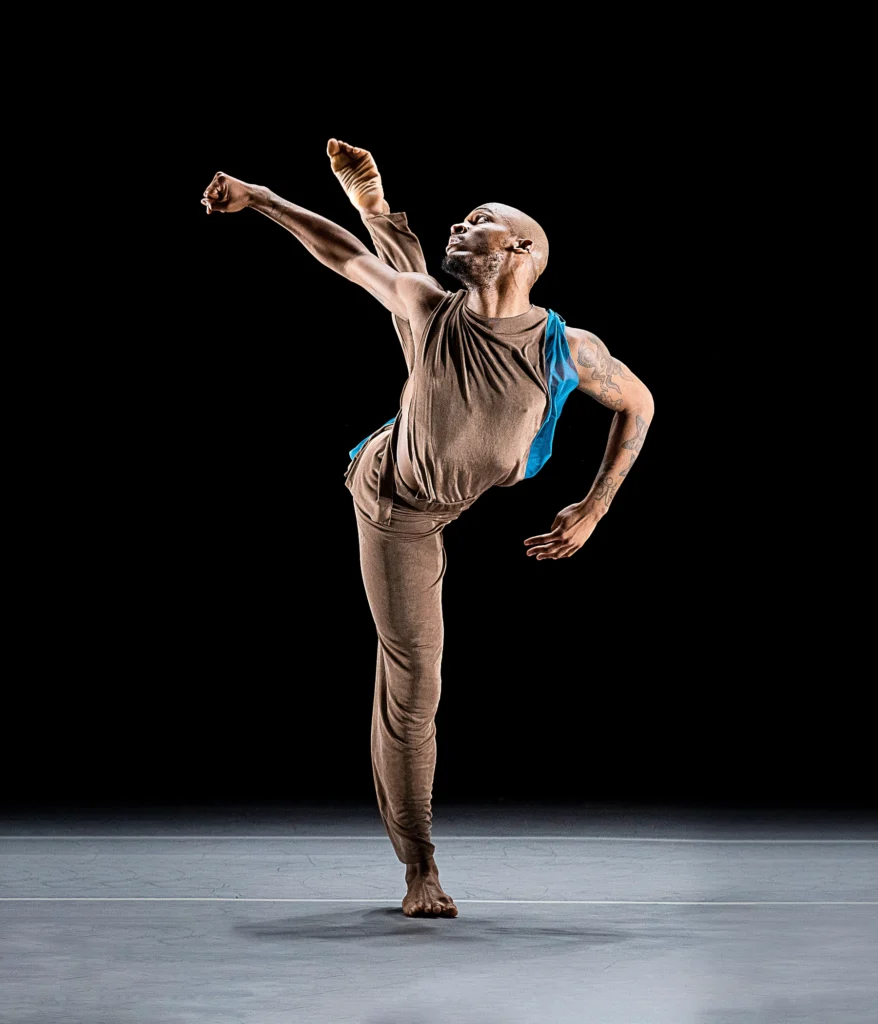
Kaitlyn Sardin
Irish and hip-hop dancer
You might know her as @kaitrock: the artist whose one-of-a-kind, Irish-dance-meets-hip-hop mashups have earned her an avid following on Instagram and beyond. While traditional Irish dance, with its strict verticality, might seem at odds with more full-bodied and grounded ways of moving, Kaitlyn Sardin finds their common thread: rhythm. Through drumming feet, swiping arms, or swiveling knees, she can tease out the intricacies of whatever sound is fueling her. (Beyoncé, Tinashe, and Victoria Monét are a few current favorites.) In every aspect of her short-form solos—including her colorful fashion choices—she is unabashedly herself.
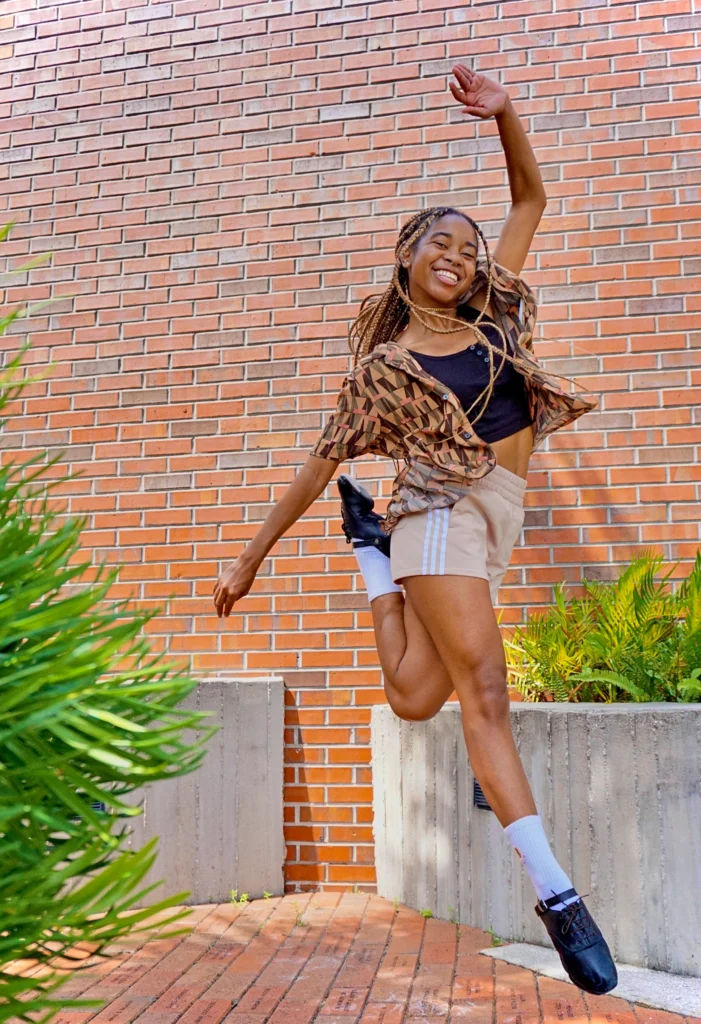
A former competitive Irish dancer with a foundation of razor-sharp technique (she grew up training at the Watters School in Orlando), Sardin broadened her dance horizons as a student at Hofstra University, where she began adding forms like dancehall and vogue to her vocabulary. She has toured with the Chicago-based Trinity Irish Dance Company and is gearing up for new projects in 2024. From February 14–March 3, you can find her performing in Jean Butler’s What We Hold at the Irish Arts Center in Manhattan.
Being Black and queer in the mostly white, sometimes culturally conservative world of Irish dance, she’s aware that younger dancers who break with convention might see themselves in her. Her advice for them? “Just go for it. Don’t be afraid, and the world will embrace you.”
—Siobhan Burke
Jake Roxander
Corps member, American Ballet Theatre
Watching Jake Roxander as Mercutio in Romeo and Juliet last July, it was hard to believe that he was making his Metropolitan Opera House debut in the role. Without a trace of nerves, the 21-year-old American Ballet Theatre corps member fully inhabited the character—cocky, loveable, magnetic, with flashes of hot-tempered recklessness. Then there was his dancing: Each solo was thrillingly virtuosic and highly musical, with pirouettes that paused momentarily on relevé—just enough time for him to give an impish grin before he was on to the next feat.
Roxander comes from a family of dancers; he and his brother Ashton, a principal with Philadelphia Ballet, were trained by parents David and Elyse Roxander at their studio in Medford, Oregon. He spent a season with Philadelphia Ballet’s second company before joining ABT’s Studio Company in 2020, where he stood out in Balanchine’s Stars and Stripes and a duet from Twyla Tharp’s Known by Heart.
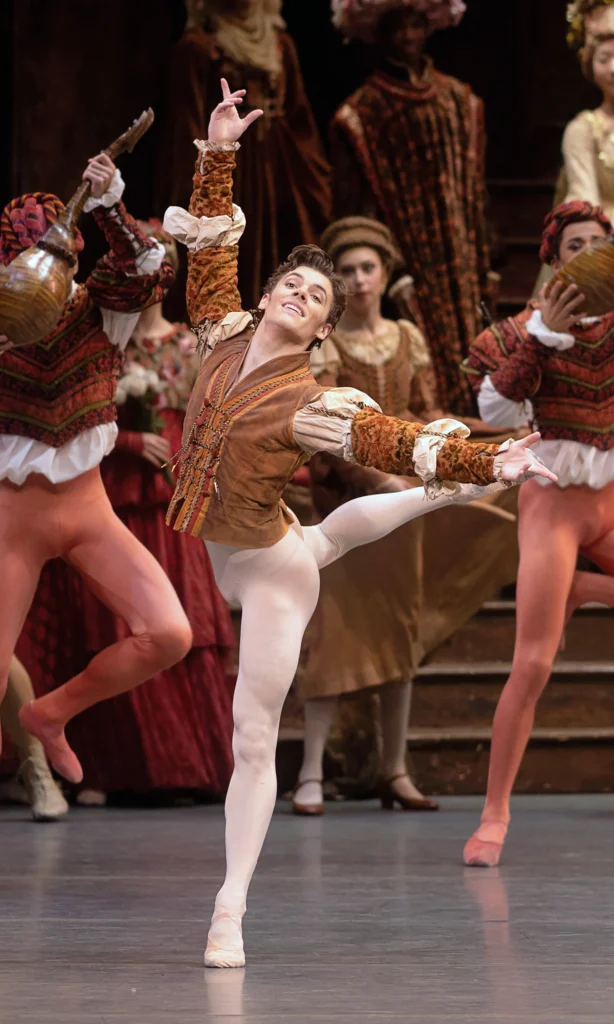
ABT has wasted no time pushing Roxander to the forefront since he joined the main company in 2022. This fall he danced principal roles in Harald Lander’s Études and Alexei Ratmansky’s Piano Concerto No. 1, and debuted in the role of Puck in Sir Frederick Ashton’s The Dream. With his powerful, unforced technique and boy-next-door charm, he is making a name for himself, and fast.
—Amy Brandt
Jindallae Bernard
Choreographer, filmmaker, and corps member, Houston Ballet
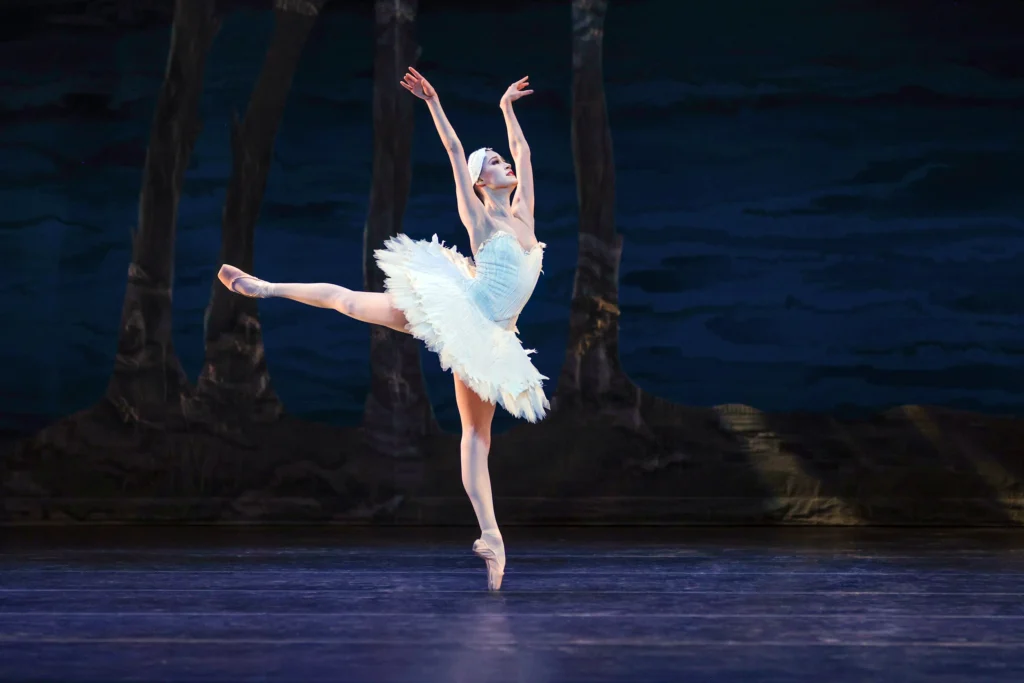
Jindallae Bernard’s portrayal of the jealous Lady Rokujo in Nao Kusuzaki’s Genji, an Asia Society Texas Center commission, exuded chilly charm and understated, seductive sensuality. Her quiet authority and stoic elegance also served her well in Stanton Welch’s neoclassical Tu Tu at Houston Ballet, though she proved equally capable of turning up the voltage in Balanchine’s Stars and Stripes. And her talents extend to choreography and filmmaking, too.
Bernard joined Houston Ballet’s corps in 2022. She’s been with the organization since she was 6 years old, rising through the Academy and Houston Ballet II before landing an apprenticeship in 2021. During her training, she took on several choreographic opportunities. Her whimsical short dance film Phase, created in 2020 during a virtual summer program composition class, so caught the eye of artistic director Stanton Welch that the company showcased it during its first live performance after the pandemic pause. “Her work feels so high-end, from the story to her use of color and light, and her directorial insight,” says Welch. He selected her to premiere a new ballet in December for the company’s annual Jubilee of Dance, for which she created Parodie de l’histoire du ballet. Says Bernard: “My goal is to contribute in as many ways as I can.”
—Nancy Wozny
Kia Smith
Executive artistic director, South Chicago Dance Theatre
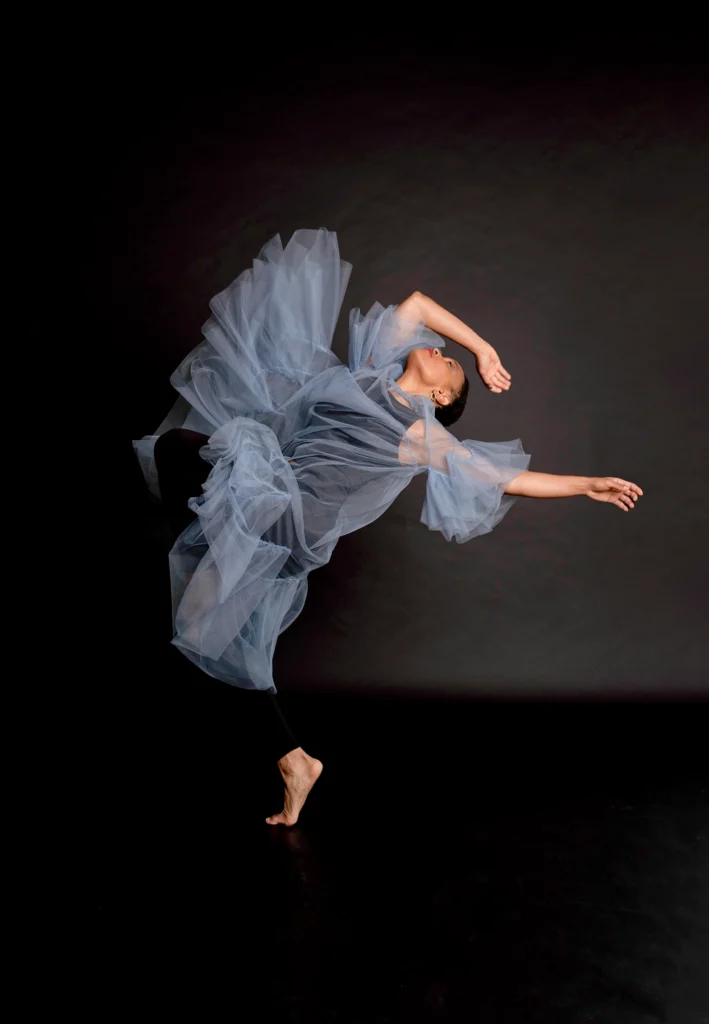
Last year’s premiere of Memoirs of Jazz in the Alley proved a perfect showcase for choreographer and director Kia Smith. The evening-length “dance opera” exemplified her choreographic voice—note-by-note precision, fluid torso movement, unexpected gesture, powerful unison—and marked the debut of her 7-year-old company, South Chicago Dance Theatre, at the Auditorium Theatre, its largest venue to date. The work paid homage to Smith’s childhood experiences at her musician father’s weekly Jazz in the Alley gatherings. That background surfaces in the way her dances feel born out of the detail and nuance of jazz music.
Smith’s success lies not only in her artistic acumen but also in the way she considers dance and the business of it on a large scale. The Chicago native is both artistic and executive director of SCDT, which has expanded its presence at home through the South Chicago Dance Festival and abroad with its Choreographic Diplomacy international exchange program. Amidst a growing list of outside commissions—notably including the rousing Luminescence for Giordano Dance Chicago’s 60th anniversary last spring—this year Smith will bring her company on tour to Seoul, South Korea, and return to the Auditorium Theatre with another world premiere.
—Maureen Janson
Hohyun Kang
Sujet, Paris Opéra Ballet
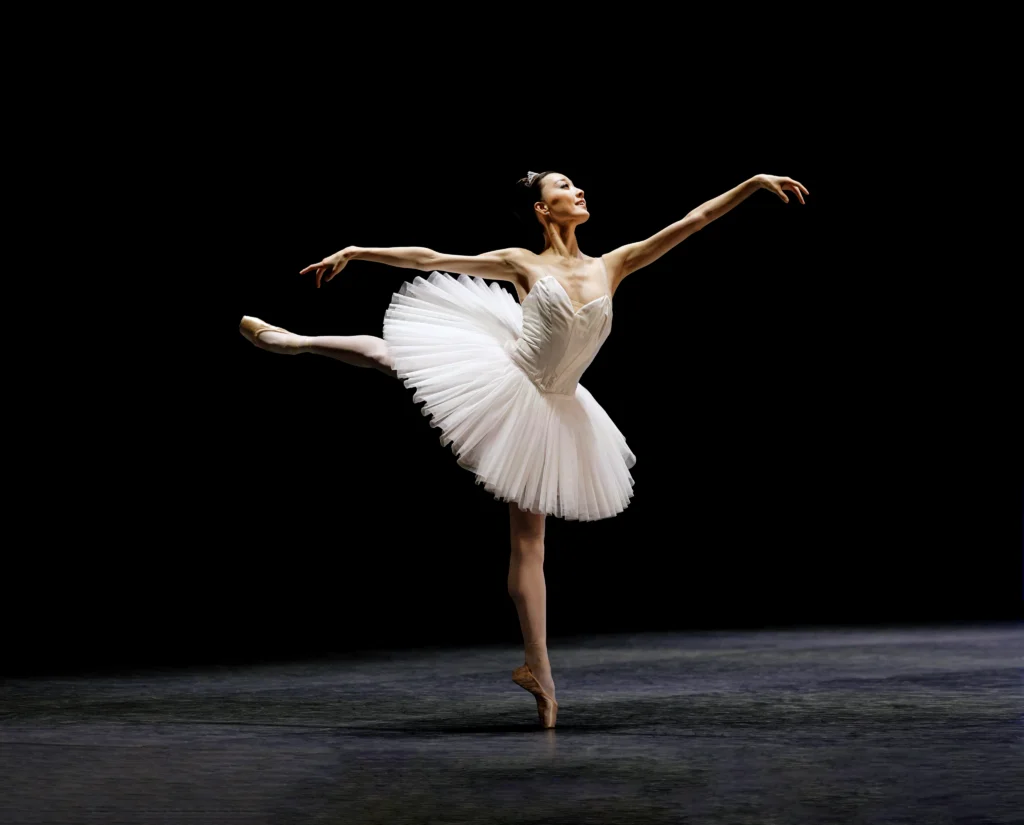
A morbid teenager involved in a murder-suicide isn’t exactly an easy first major role. Yet from the moment South Korea’s Hohyun Kang, who joined Paris Opéra Ballet in 2018, stepped out as Mary Vetsera in Mayerling last season, she found logic and purpose in Sir Kenneth MacMillan’s choreography. As she draped herself around Paul Marque, her Prince Rudolf, her lines sizzled with dramatic tension.
It was an arresting breakthrough for the 28-year-old, who had been on balletomanes’ radar for her easy, radiant musicality and technique in ballets such as Balanchine’s Concerto Barocco. A graduate of Korea National University of Arts, she was noticed by William Forsythe shortly after joining POB and landed a soloist role in his Blake Works I, before quietly making her way up the ranks and becoming a sujet (soloist) last season. She is already slated for a Kitri debut in April—and may well follow in the footsteps of Paris’ first South Korean étoile, Sae Eun Park.
—Laura Cappelle
Karla Puno Garcia
Musical theater choreographer
When last year’s Tony Awards had to go without a script and instead lean on dance to set the scene, host Ariana DeBose knew just the choreographer who could pull it off: Karla Puno Garcia. The resulting opening number brought viewers on a danced journey through the United Palace theater, using Garcia’s spunky, sassy movement to amp up excitement for the night. Later, Garcia’s unapologetically feminine flair and super-satisfying musicality showcased DeBose and Julianne Hough in a duet that felt both timely and timeless.
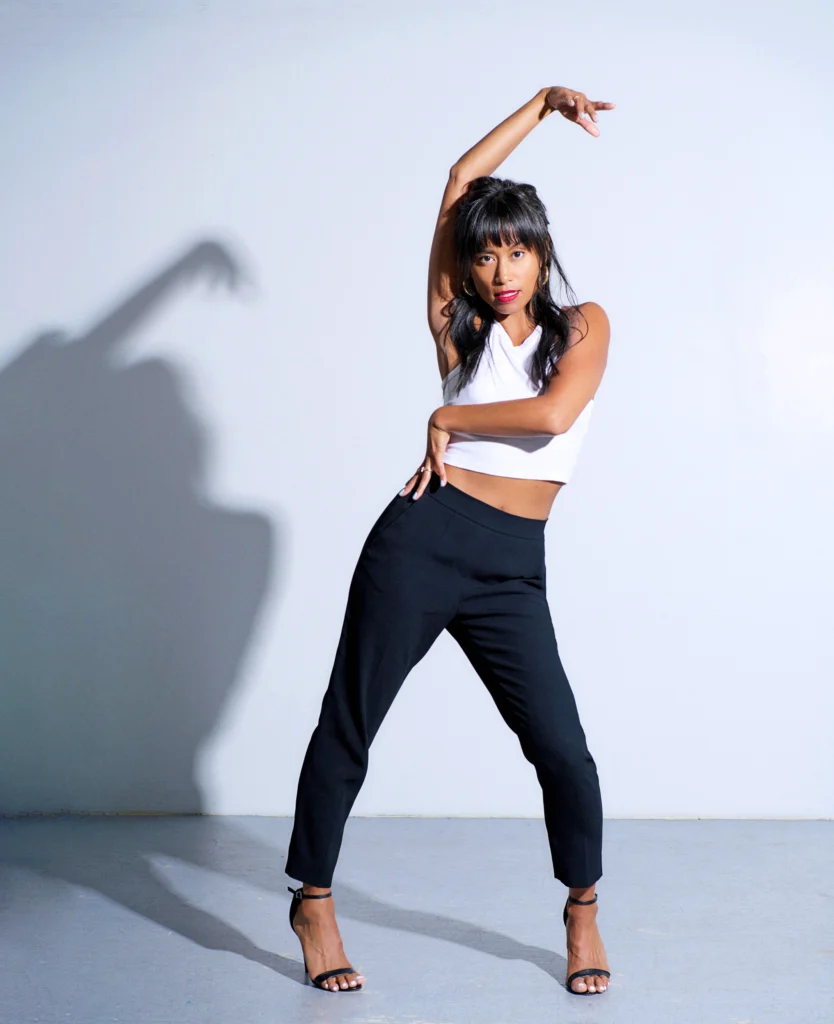
Garcia was the first woman of color to choreograph the Tonys. But it’s far from her only brush with the event. A Broadway vet who’s been dancing on the Great White Way since her college days at New York University, she previously performed with the casts of Gigi and Hamilton at the Tonys and was a dancer and associate choreographer in 2021 when Sergio Trujillo choreographed the opening number. Soon, she may even be up for a Tony herself: She’s making her Broadway choreographic debut this January with Days of Wine and Roses, which she co-choreographed with Trujillo.
For his part, Trujillo thinks she’s “unstoppable” as a choreographer: “Karla’s like a musician that can play all the instruments with her feet and arms and body,” he says. “She comes across as incredibly gentle, but she’s a force to be reckoned with.”
—Jennifer Heimlich
Kuu Sakuragi
Soloist, Pacific Northwest Ballet
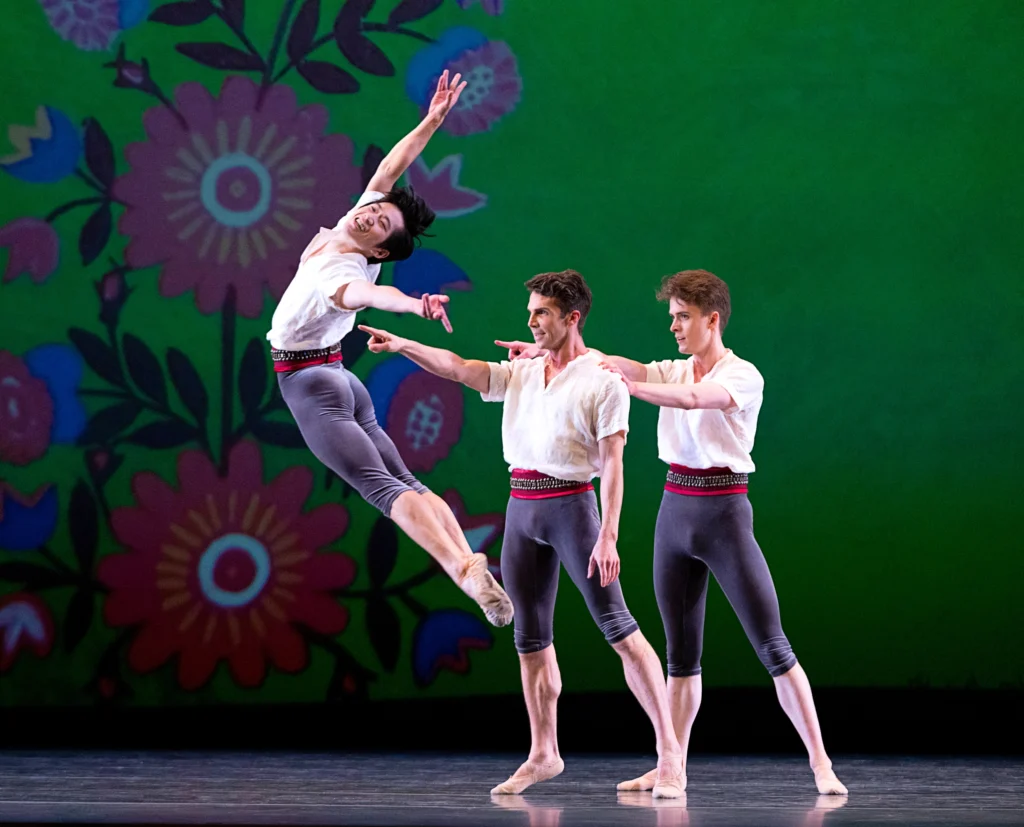
With a raw physicality matched with bighearted sensitivity, Kuu Sakuragi is quickly heading toward rockstar status at Pacific Northwest Ballet. He creates electrifying spectacles onstage, delivering one jaw-dropping performance after another. His big technical jumps look as if he’s floating on air, an impression only heightened by his gravity-defying turnin David Parsons’ Caught, while his warmth and humility come through as deference to the other dancers onstage, as in Alexei Ratmansky’s Wartime Elegy. A PNB DanceChance student and Professional Division graduate, Sakuragi joined the corps in 2020 after dancing with Alberta Ballet for three years and was promoted to soloist in November. “Certain dancers live more completely in the moment when they’re dancing,” artistic director Peter Boal says. “Nureyev, Wendy Whelan, Carla Körbes come to mind. Kuu is one of them.”
—Gigi Berardi
Sydnie L. Mosley
Founding executive and artistic director, SLMDances
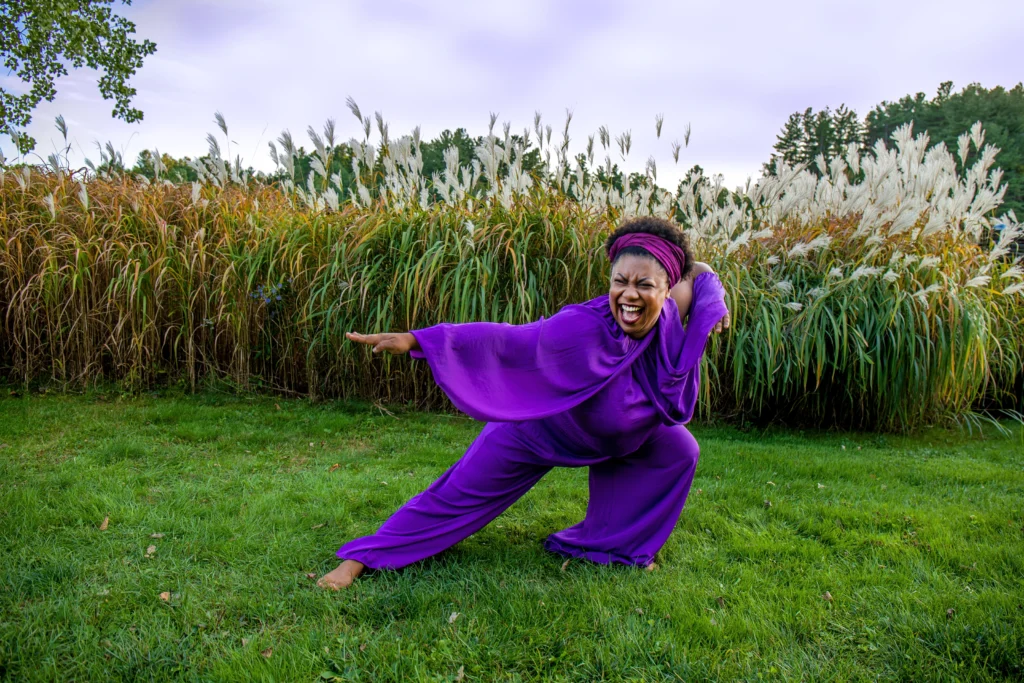
In the spring and summer of 2020, conversations about racial equity and social justice erupted across the dance field. How could exclusionary systems be transformed? How could imbalances of power be corrected? How could people better care for one another?
For the choreographer, performer, educator, and writer Sydnie L. Mosley, these questions were nothing new. The Baltimore-born Mosley has been envisioning a future free from oppression—with dance as one way to get there—at least since 2010, when she founded her Harlem-based collective SLMDances. For people just beginning on that journey, she and her collaborators became a guiding light.
A self-described “creative home for trans, cis, nonbinary, queer, disabled, fat, masculine presenting, Black women and femmes of many generations,” SLMDances takes seriously the term “collective,”operating through a model of shared leadership and responsibility. Their community-engaged, joyfully interactive works have tackled issues like street harassment (The Window Sex Project, 2012) and the economics of dance (BodyBusiness, 2015). Their latest, PURPLE: A Ritual in Nine Spells, honors the Black feminist playwright, poet, and dancer Ntozake Shange, whose legacy Mosley extends through her own intertwining of movement and language. Premiering at Lincoln Center last summer, PURPLE marked a turning point for Mosley in its visibility and scale. Her vision persists; what’s changed, perhaps, is the world’s readiness to join her.
—Siobhan Burke
Laila J. Franklin
Independent dance artist
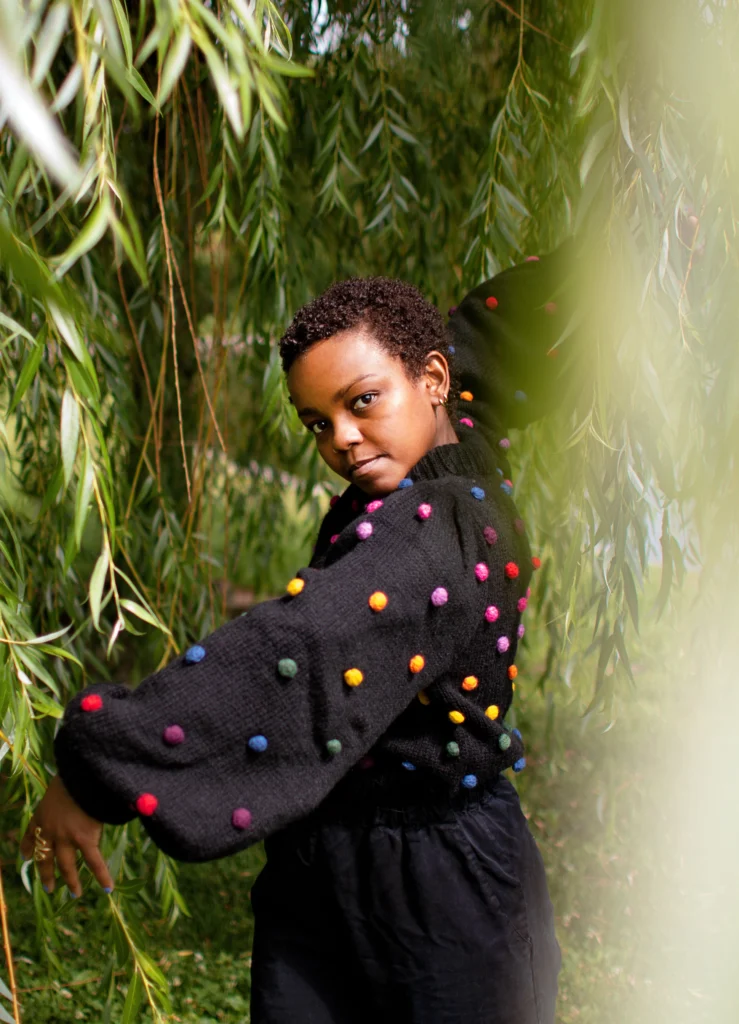
Contradictions power Laila J. Franklin’s charisma. She can shift from sly comedy to earnest sincerity over the course of an eight-count. She moves with disarming frankness, making even complex gestures look straightforward and open; she also seems to keep part of herself closed to the audience, protective of her own mystery.
That sense of unknowable-ness sits right at the center of choreographer Miguel Gutierrez’s I as another, which Gutierrez and Franklin performed in New York City last spring. The intimate, probing duet suggests we can never truly know each other, or even ourselves—but we can try. In I as another, Franklin showed a kind of virtuosic empathy, living fully inside Gutierrez’s creative vision without erasing herself. Forget walking in someone else’s shoes—she can dance in their feet.
Franklin, who earned a BFA from Boston Conservatory in 2019 and an MFA from the University of Iowa in 2021, is also a choreographer, teaching artist, and writer. Maybe over time we’ll get to know her better through her own work. Maybe she’ll always keep part of herself a mystery. Either way, she’ll be holding our attention.
—Margaret Fuhrer
Lucy Fandel
Independent dancer and choreographer
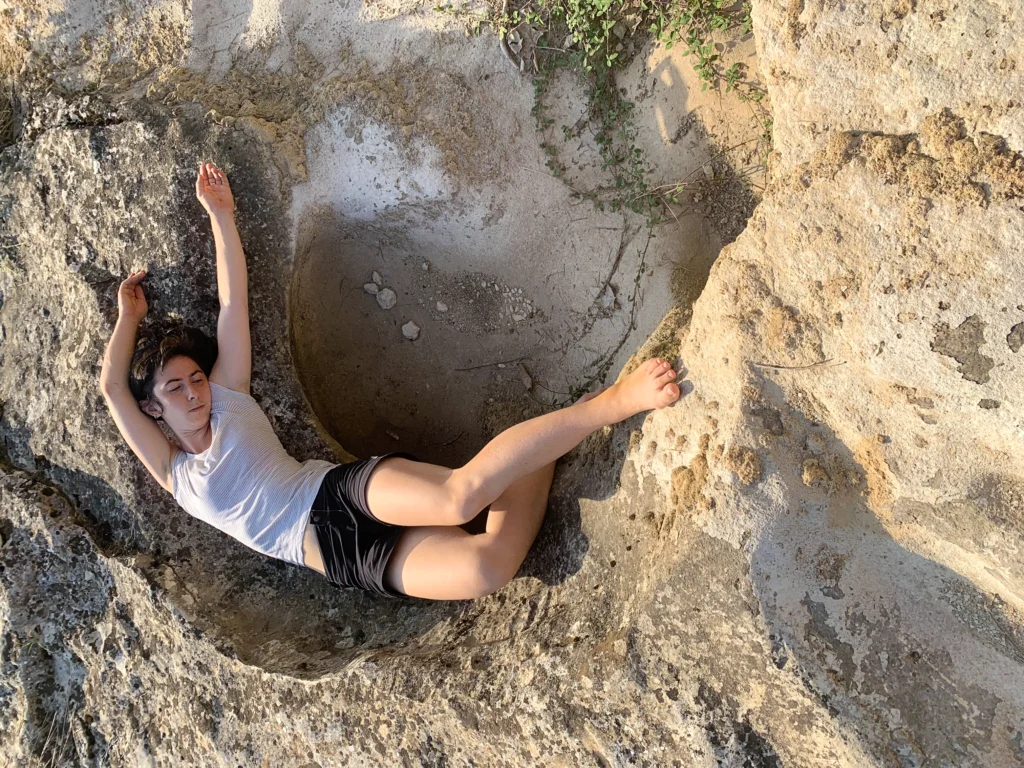
In the semi-improvised, place-based dance Lucy Fandel creates, the land is something alive, not just a backdrop. “The inhaling clouds, quivering blades of grass, swarms of gnats, or the occasional romping dog pulled us in,” she writes of her and Bailey Eng’s creative explorations during a residency in Spain. In a section of their filmed field notes, Fandel responds viscerally to these movements in the environment while dancing atop a rocky outcropping, at once fluid and angular as she articulates through her hands, rib cage, pelvis.
A dance artist, writer, and arts outreach worker, Fandel grew up in Concord, Massachusetts, and Beaulieu-sur-Mer, France. “Switching languages forces you to think differently,” she says. She later crossed borders yet again, moving to Montreal to study contemporary dance and sociology at Concordia University. Fandel’s attachment to sociology field work influenced her dance perspective and, today, she’s at the forefront of the burgeoning sustainable eco-dance movement in Canada. She’s right at home engaging with the landscape during her outdoor research (“conversations,” as she calls them), examining the vectors of science and dance while sensitizing people to the natural environment in all its ambiguity and transformation.
—Philip Szporer
Miguel Alejandro Castillo
Choreographer and freelance performing artist
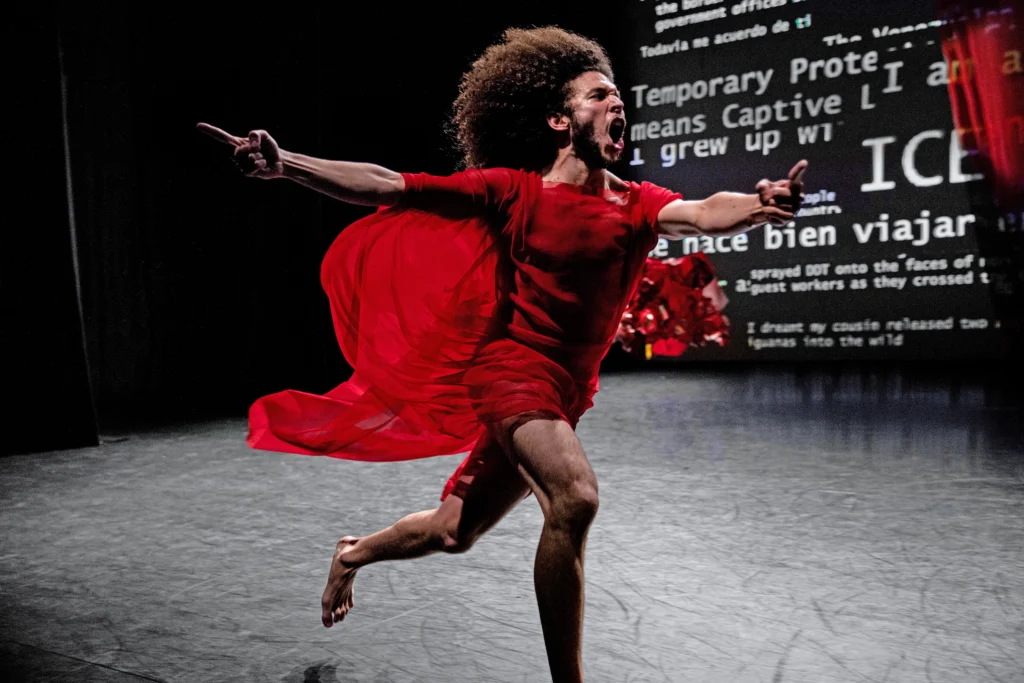
Onstage, Miguel Alejandro Castillo emanates a warmth and wit that creates instant connection. An incredibly committed performance in Faye Driscoll’s whirlwind ensemble work Weathering last April highlighted this generosity. As part of a precarious flesh sculpture that teetered off the edges of a spinning raft, Castillo maintained an active, intense bond with his fellow performers, even as his ponytail swept the ground and it became increasingly unclear whether he was being supported or smothered.
Castillo brings a bright presence and big love into the studio, Driscoll says, alongside an impressive conceptual curiosity. “He’s embracing the full range of human experience,” she says, “connecting the light and the dark.” In his own choreography, the Venezuelan artist, who started in theater, explores his native country’s diaspora, blending forms to forge a kind of future folklore.
Castillo recently completed a New York Live Arts Fresh Tracks residency and acted as movement director for the David Lang opera Prisoner of the State. He’ll keep building on that momentum in 2024: In addition to choreographing John Adams’ opera The Gospel According to the Other Mary for Volksoper in Vienna and touring Weathering, Castillo will be a choreographer in residence at both PAGEANT performance space in Brooklyn and Abrons Arts Center in lower Manhattan.
—Candice Thompson
Naomi Funaki
Tap dancer and choreographer
During the in-person debut of Ayodele Casel’s Chasing Magic, Japanese tap artist Naomi Funaki commanded attention with her clear, confident sounds. She modulated her tones and phrasing to cover a broad emotional spectrum, from contemplative to exuberant, as she floated through a duet, in a role originated by Casel, with joyful ease. “Her technical prowess and rhythmic voice are dynamic and contain so much depth and nuance,” says Casel, who invited Funaki to make her choreographic debut last April during Casel’s Artists at the Center engagement at New York City Center.
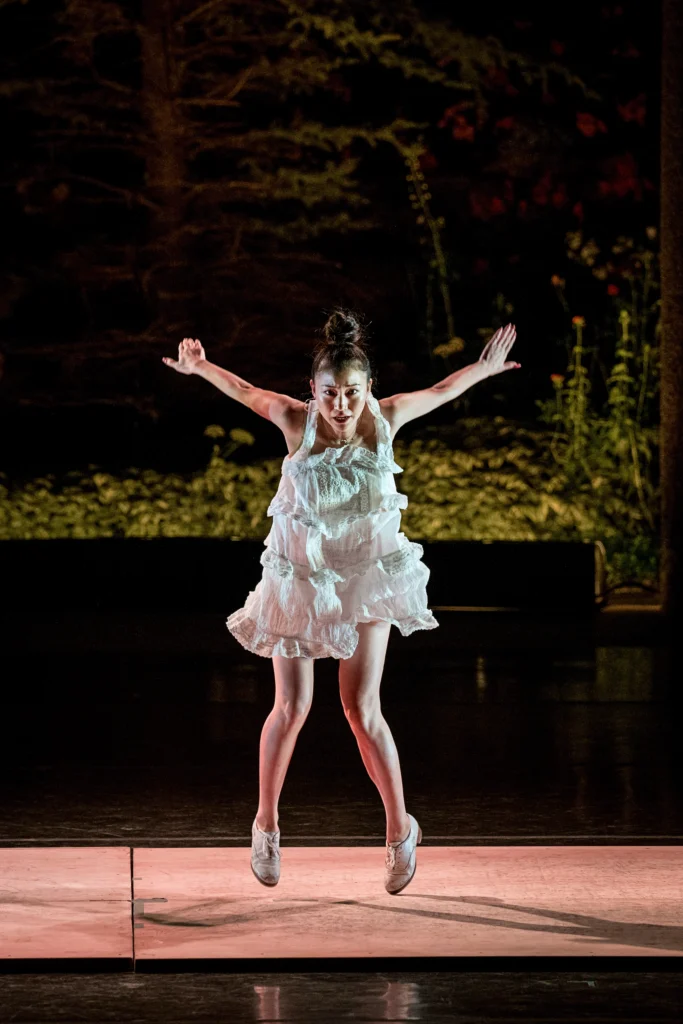
Casel is not alone in her sentiments. Funaki was the recipient of a 2023 Princess Grace Award and is an apprentice with Dorrance Dance. She performed in the December premiere of Caleb Teicher’s reworked Bzzz, a tap-meets-beatbox show for which she also served as assistant choreographer, and in January will show off her range in Leonardo Sandoval’s samba-inflected I Didn’t Come to Stay with Music From The Sole.
Ultimately, Funaki’s goal is to bring the spirit and professionalism of the New York City tap community back to Japan. Casel has every faith that she will, and along the way inspire a whole new generation of tap dancers.
—Candice Thompson
Olivia Bell
Corps member, New York City Ballet
Some dancers demand your attention. New York City Ballet’s Olivia Bell politely requests it. But the elegantly understated dancer is no wallflower. A fervent musicality powers her fine-grained technique, giving it a lush, romantic sweep.
Bell, who only joined New York City Ballet’s corps in May, still has surprises in store. At last summer’s Vail Dance Festival, she danced Balanchine’s Tarantella, a mile-a-minute showstopper that must have been nearly impossible to survive at Vail’s one-and-a-half-mile elevation. Bell handled the challenge with not just polish but sparkle, nailing the work’s witty musical phrasing and showing off the prodigious pirouettes that most of us had previously only seen on her Instagram page. Here’s to more surprises, and soon, on NYCB’s stage.
—Margaret Fuhrer
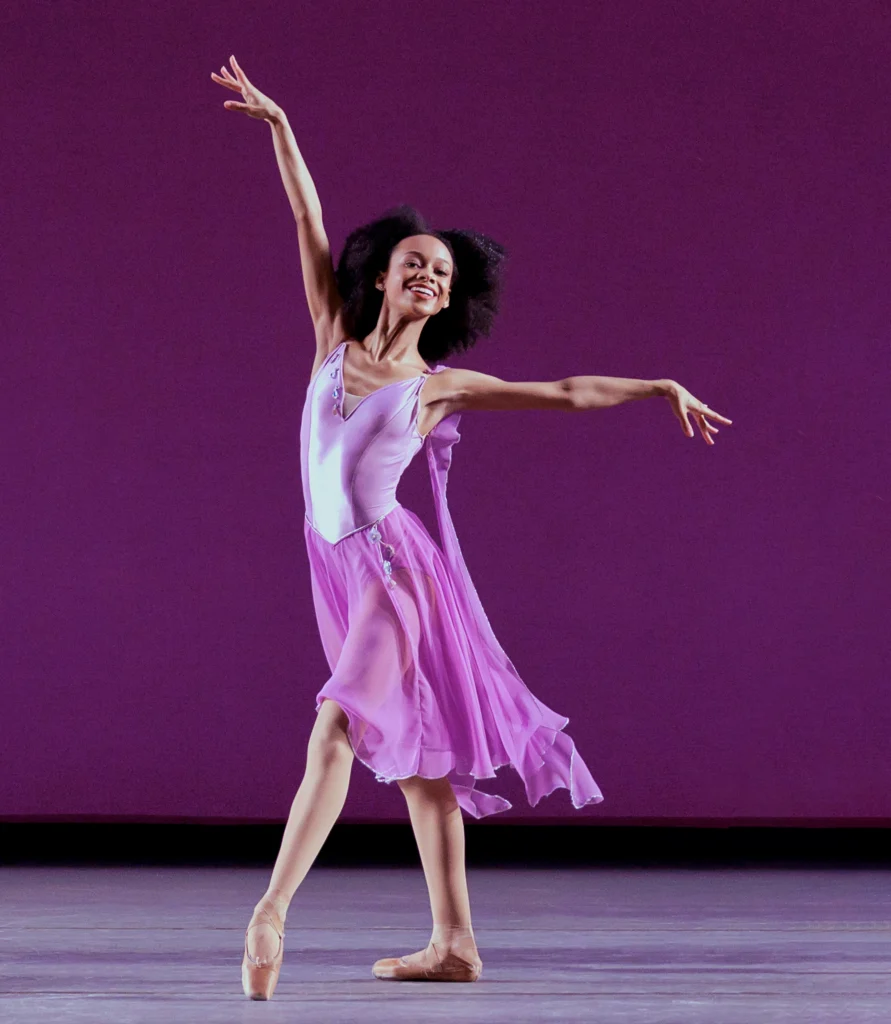
Pauline Casiño
Commercial dancer
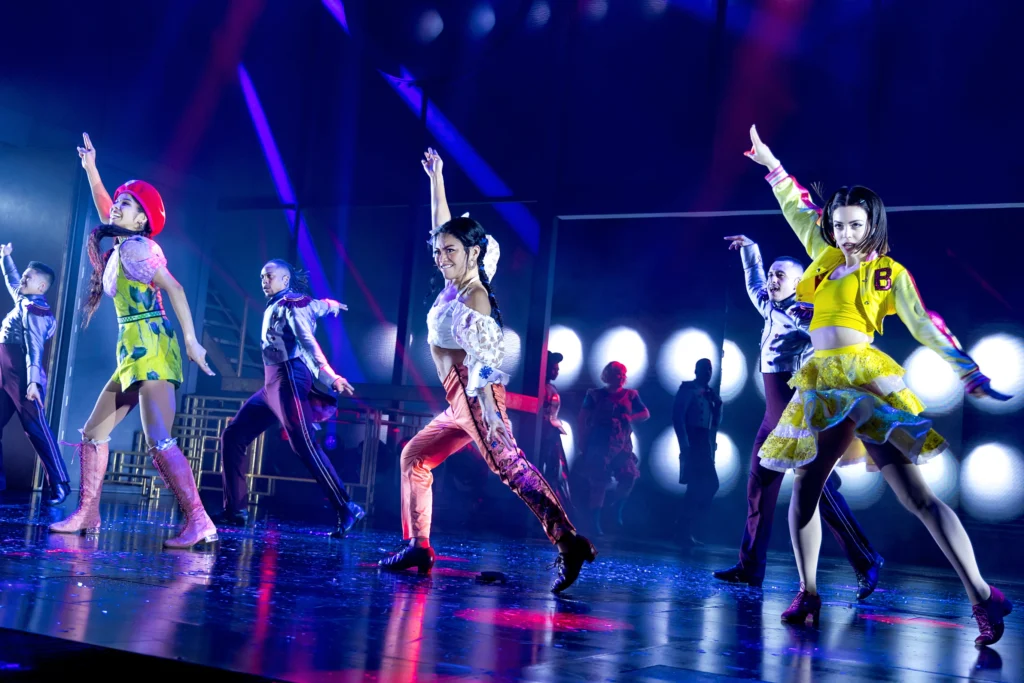
Pauline Casiño booked her Broadway debut without an in-person audition. She learned about casting for Once Upon a One More Time, directed and choreographed by Keone and Mari Madrid, after the first round of auditions had already concluded and asked her agent to help find a way in. “I always knew of Keone and Mari,” she says. “As a fellow Filipino, I wanted to be part of something they’re creating.” Even though she had never taken class with the Madrids, let alone worked with them before, she landed the part of Esmeralda through a video submission. Onstage, she brought the ensemble character to life with her unforgettable fluidity, powerful femininity, and magnetic presence.
Casiño, who moved to the Bronx from the Philippines at age 12, grew up thinking dance was extracurricular. While studying chemistry in college, she danced in commercial choreographer Candace Brown’s The Soul Spot and BTS’ Love Yourself: Speak Yourself New Jersey concert, but it wasn’t until she graduated in 2020 that she fully embraced dance as her profession. Since then, she has performed with Anitta and Doja Cat at MTV’s Video Music Awards, as well as choreographed and directed her own dance visual. Only three and a half years into seriously pursuing a dance career, Casiño has already proved she has star quality.
—Kristi Yeung
Rafael Ramírez
Flamenco dancer and choreographer
With fluid arms, deep, effortless lunges, supple contractions, and rapid, complex footwork, Rafael Ramírez spellbinds. But it is his old soul, which adds sensual vulnerability to his performances, that leaves an indelible impression.
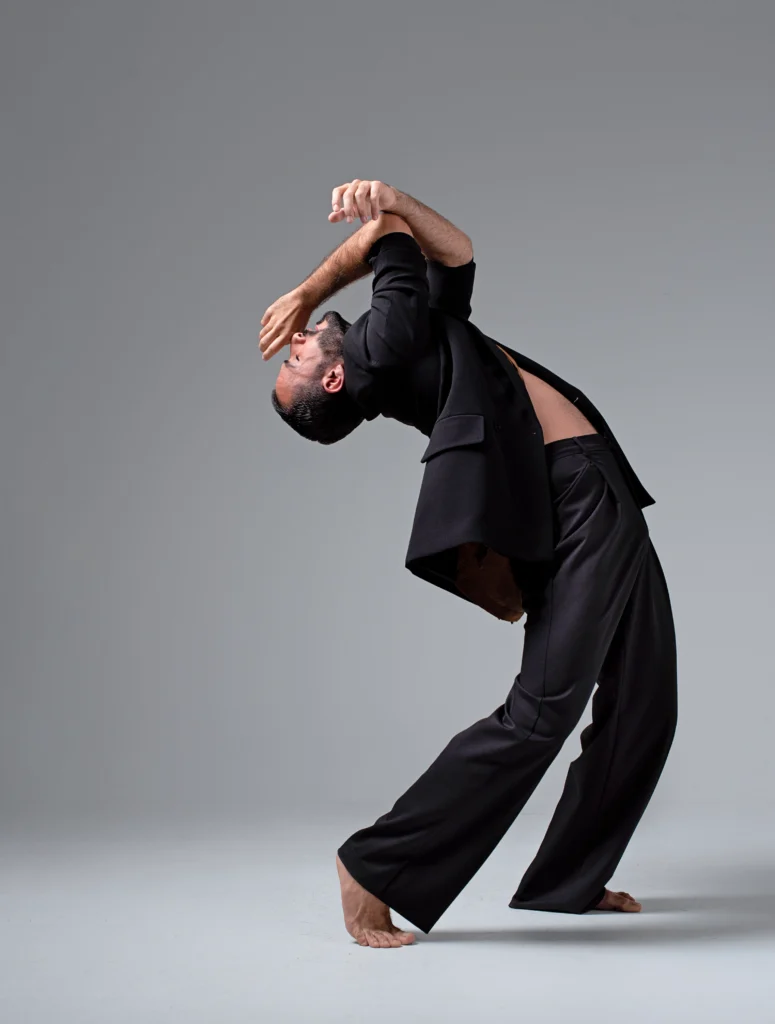
Ramírez’s prowess in both traditional and contemporary flamenco captivates across venues, from Spain’s most prestigious tablaos to international theaters with the companies of famed choreographers such as David Coria and Rafaela Carrasco. He’s also garnered critical recognition: In 2021, he won the highly coveted Desplante Masculino at the International Cante de las Minas Festival and, last year, received the 2023 Best New Artist Award from the prestigious Festival Jerez for his Entorno. He carried that momentum into the 2023 Bienal de Málaga, where he premiered Recelo, a collaborative work with prize-winning dancer Florencia Oz exploring the primal emotion of fear, and into a 10-city U.S. tour of his solo show, Lo Preciso, this past fall. With more performances of Recelo ahead, Ramírez enters 2024 on the road to international recognition.
—Bridgit Lujan
Yuval Cohen
Corps member, Philadelphia Ballet
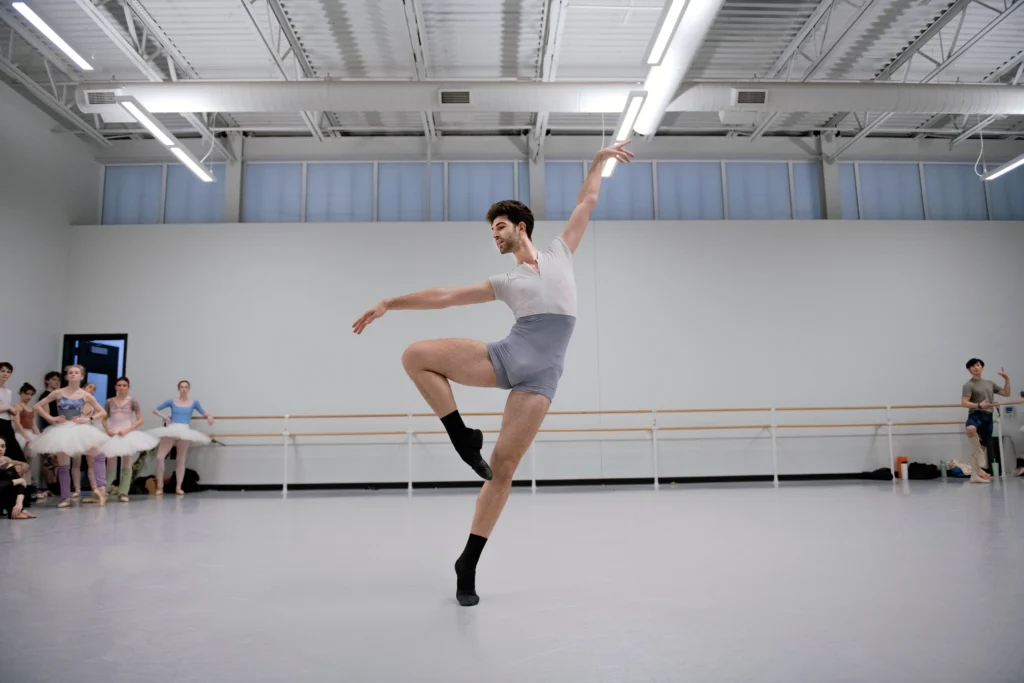
An elegant carriage and genteel demeanor make Yuval Cohen an ideal storybook prince. But behind that refinement lies impressive power. His explosive, elastic leaps and strong, centered turns had everyone buzzing at last summer’s USA International Ballet Competition in Jackson, Mississippi. The 21-year-old Israeli dancer, a newly promoted Philadelphia Ballet corps member, was the first from his country to medal, taking home the senior bronze.
Cohen’s USA IBC coach was his longtime mentor, Nadya Timofeyeva, with whom he trained at the Jerusalem Ballet School. In 2018, she took him to a competition in Russia, where he won first prize and a spot at the Vaganova Ballet Academy. After becoming the school’s first Israeli graduate in 2021, Cohen joined Moscow’s Bolshoi Ballet. But the pandemic created visa complications, forcing him to return home that summer.
Cohen joined Philadelphia Ballet II in October 2021 and became a company apprentice the following season. He’s already gained notice in a range of featured roles, including a Stepsister in Cinderella, the Gold variation in The Sleeping Beauty, and Escamillo in Angel Corella’s new production of Carmen, which premiered this fall.
—Amy Brandt
Sean Lew
Commercial dancer and choreographer
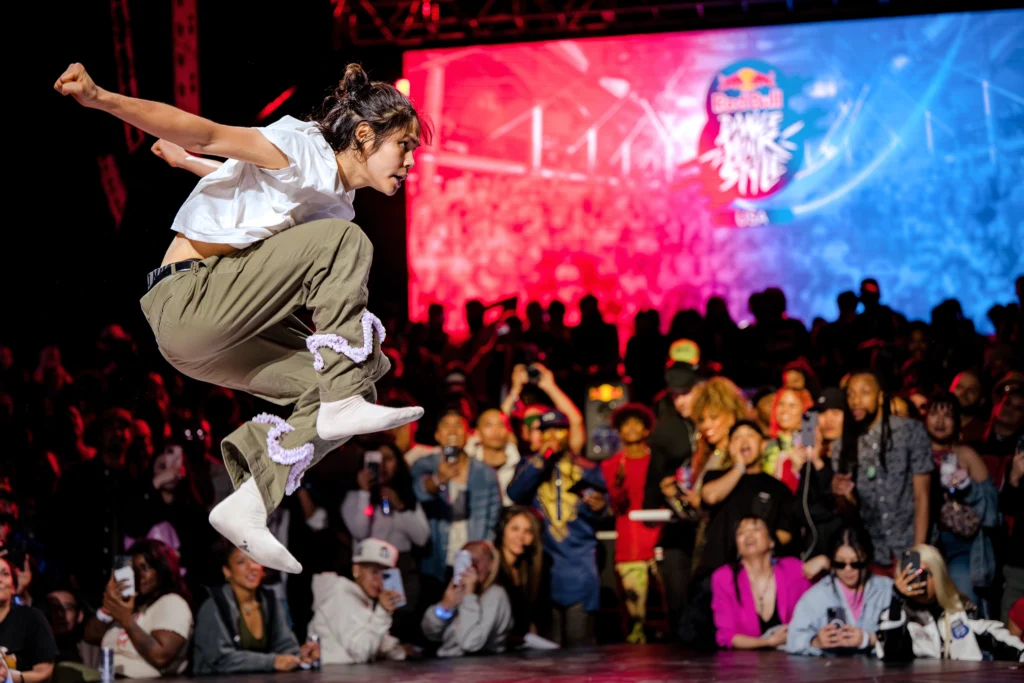
In viral YouTube videos, two seasons of NBC’s “World of Dance,” performances with stars from Janet Jackson to Justin Bieber, and his own hour-long dance film, II, Sean Lew has won over millions of fans with his articulate athleticism, honest storytelling, and undeniable charisma. The 22-year-old is far from new to the industry, but he’s still taking his career in new directions. In 2023, he conquered his biggest fear: battling. “It’s not just if you’re good at dancing, then you can battle,” Lew says. “People live, breathe, and eat battling.” He amped up his fitness training and studied freestyle genres such as house and krumping, and, after a humbling early-round loss at his first battle, he went on to win the Red Bull Dance Your Style Los Angeles regionals in April. He then brought home the national title in May and represented the U.S. at the global competition in November.
Despite his newfound commitment to the competitive freestyle scene, Lew continues to grow his career in other areas. Over the last year, he launched his first fitness and dance intensive, Artist Range, with trainer Karl Flores; was a first-time creative director for Jackson Wang’s Coachella performance; and was a first-time co-producer on a Dermot Kennedy music video. “The beauty and curse of my life,” he says, “is I just want to do everything.”
—Kristi Yeung
Solal Mariotte
Independent choreographer and dancer, Rosas
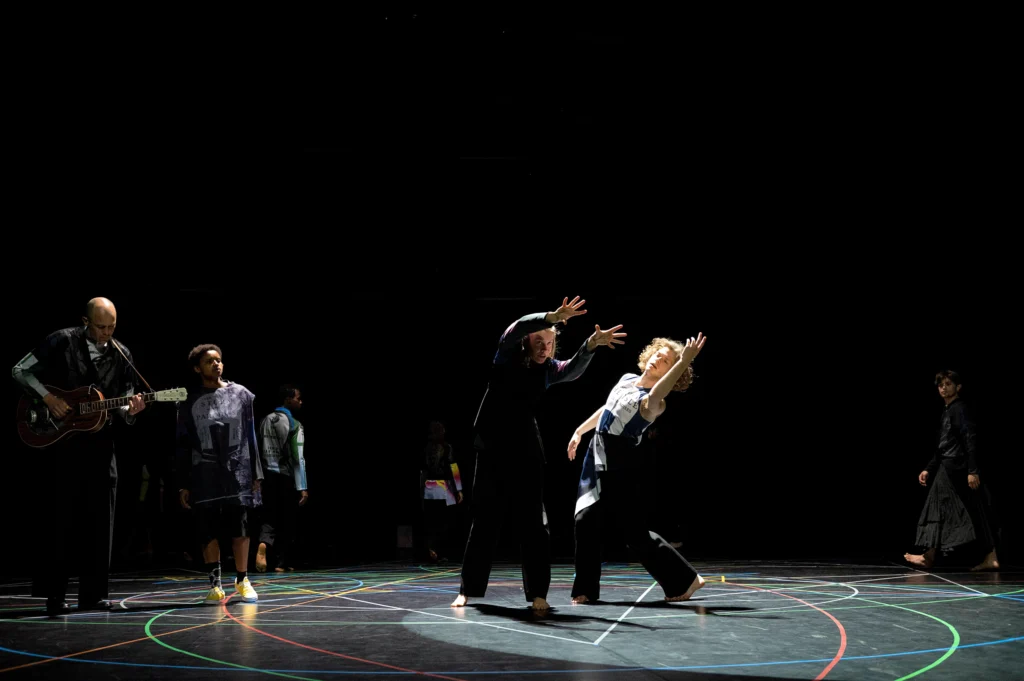
In EXIT ABOVE — after the tempest, Anne Teresa De Keersmaeker’s typically minimalistic world suddenly seemed looser and brighter. The reason? A new generation of dancers, led by French newcomer Solal Mariotte, who got his start in hip hop. The curly-haired 22-year-old acted as a mercurial leader, shifting easily from floor work to the air, launching himself into arresting dives to the floor.
At 18, looking for a challenge, Mariotte applied to P.A.R.T.S., the school founded by De Keersmaeker in Brussels, where he immersed himself in contemporary dance while co-founding a breaking crew, Above The Blood, on the side. In addition to joining Rosas in 2023, he is also developing projects with his crew and as a choreographer. In January, a new version of his solo Collages/Ravages will premiere at the prestigious Suresnes Cités Danse festival in France. With his influences now cross-pollinating in captivating ways, a shape-shifting career beckons.
—Laura Cappelle
Kamala Saara
Dancer, Dance Theatre of Harlem
Midway through William Forsythe’s Blake Works IV last April, Kamala Saara transfixed the audience in a soulful, introspective solo. She stretched her long limbs expansively, pulling every inch out of them before retracting dynamically into the next phrase. She seemed to be lost in a dream, her arms sweeping through an unseen atmospheric viscosity. And while the solo is deeply internal, Saara invited the audience at Dance Theatre of Harlem’s New York City Center season into her world.
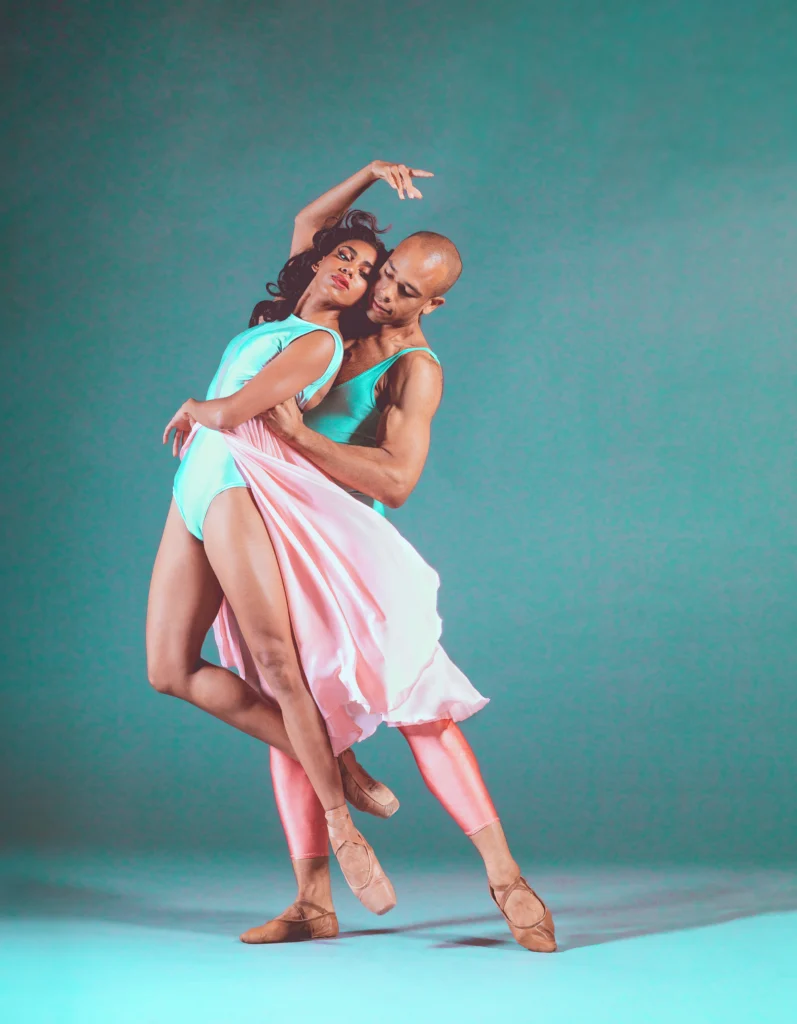
Saara, 21, grew up studying at the Yuri Grigoriev School of Ballet in Los Angeles, spent two summers at the Bolshoi Ballet Intensive in New York City, and at 16 was invited to Moscow to perform at the Bolshoi Ballet Academy’s annual gala. She moved to New York in 2019, training first with Andrei Vassiliev before entering the School of American Ballet. SAB’s focus on speed and lightness, she says, made her more versatile.
Meanwhile, then-DTH artistic director Virginia Johnson had had her eye on Saara since Chyrstyn Fentroy invited her to take company class at age 15. Saara joined DTH in 2020, shining in Stanton Welch’s Orange and Balanchine’s Allegro Brillante. This season, she takes on the principal role in Balanchine’s Raymonda-inspired Pas de Dix, adding a glamorous ballerina part to her repertoire.
—Amy Brandt
Water Street Dance Milwaukee
Contemporary dance company
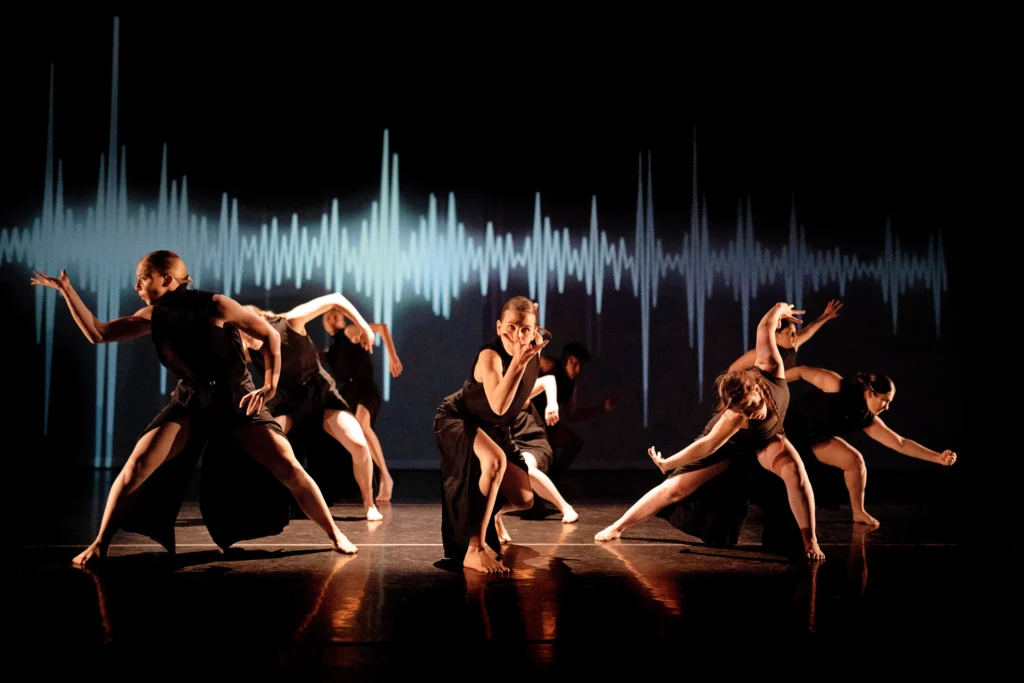
In Milwaukee, ballet is king. But funders, dancers, presenters, and audiences are all sitting up and taking notice of Water Street Dance Milwaukee, giving the city the top-shelf contemporary company it deserves. The company, which rehearses in a suburban Milwaukee enclave, launched just as the pandemic hit, but still managed to build a roster of impeccable dancers, create a dance festival, and form pre-professional programs. The city’s dance community is mobilizing around Water Street’s momentum as the company produces new festivals, outdoor pop-up performances, and shared auditions. It performs all over the Midwest, but director Morgan Williams’ goal is to take Water Street international. He sprinkles up-and-coming choreographers, like Kameron N. Saunders, Madison Hicks, Braeden Barnes, and Leandro Glory Damasco, Jr., into the rep alongside his own choreography. At just 33, he is a savvy director and choreographer with support from some of the region’s sharpest dance leaders and a long runway ahead.
—Lauren Warnecke
Header collage photo credits, left to right, top to bottom: Ryoko Konami, courtesy Naomi Funaki; Michelle Reid, courtesy Kia Smith; Todd Rosenberg, courtesy Giordano Dance Chicago; Laura Irion, courtesy Karla Puno Garcia; Rosalie O’Connor, courtesy American Ballet Theatre; Angela Sterling, courtesy Pacific Northwest Ballet; Kat Stiennon, courtesy Water Street Dance Milwaukee; Erin Baiano, courtesy New York City Ballet; Jay Spencer, courtesy Miguel Alejandro Castillo; Isabella Herrera, courtesy Kaitlyn Sardin; Julien Benhamou, courtesy Paris Opéra Ballet; Nir Arieli, courtesy Dance Theatre of Harlem; Steven Pisano, courtesy A.I.M by Kyle Abraham; Lawrence Elizabeth Knox, courtesy Houston Ballet; Alex Harmon/Red Bull Content Pool, courtesy Sean Lew; Robbie Sweeny, courtesy Clarissa Rivera Dyas; Anne Van Aerschot, courtesy Rosas; Bailey Bailey, courtesy Laila J. Franklin; C-Unit Studio, courtesy Pauline Casiño; Anita Buzzy Prentiss, courtesy Pittsburgh Ballet Theatre; Nicole Mitchell Photography, courtesy Danielle Swatzie; Gabriel Asensio, courtesy Rafael Ramírez; Camille Augustyniak, courtesy Lucy Fandel; Arian Molina Soca, courtesy Philadelphia Ballet; Travis Coe, courtesy Sydnie L. Mosley.
